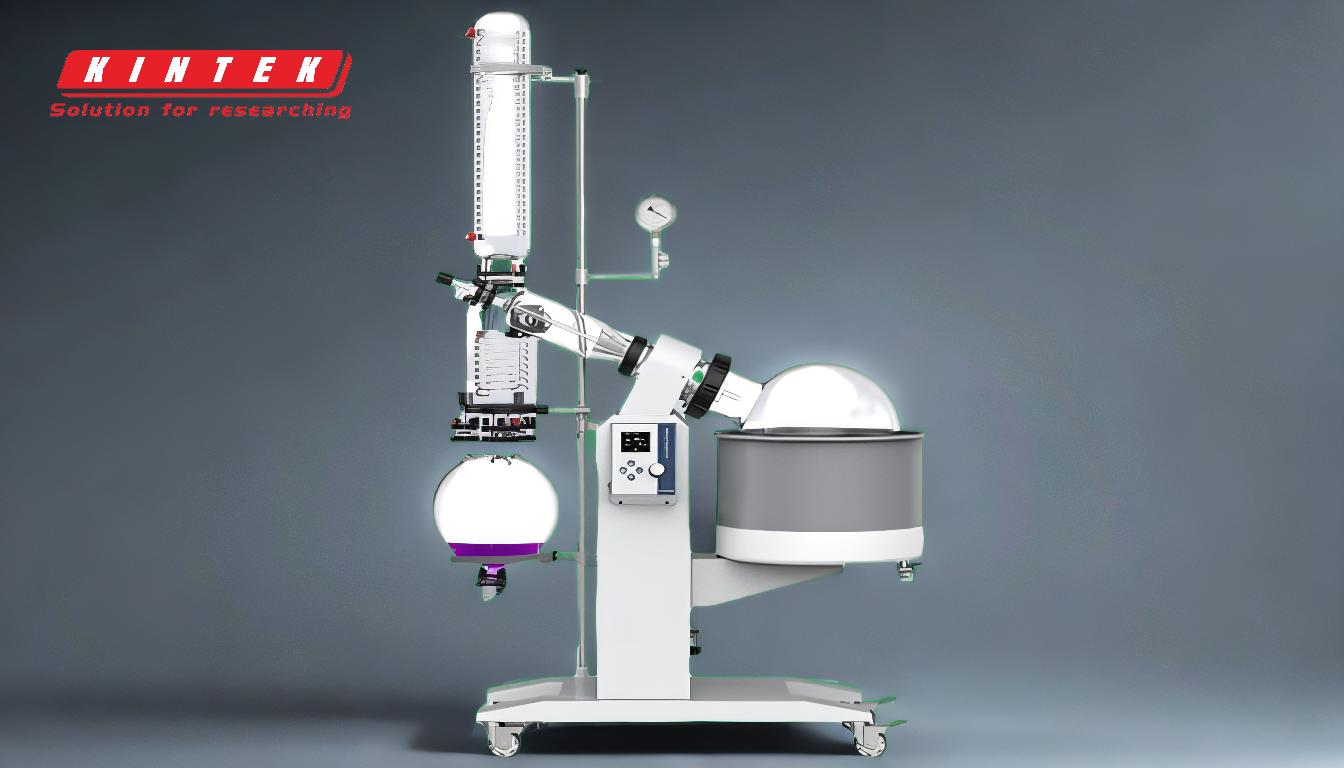To effectively remove ethanol using a rotary evaporator, the pressure and temperature settings must be carefully controlled. The recommended vapor temperature for ethanol removal is 25–30°C, which corresponds to pressures of 95 mbar (at 25°C) and 123 mbar (at 30°C). The bath temperature should be set about 20°C higher than the desired vapor temperature, typically around 50°C, while the condenser temperature should be about 20°C lower, often set to 0°C. These settings help optimize the distillation process, prevent issues like bumping, and ensure efficient ethanol removal.
Key Points Explained:

-
Recommended Vapor Temperature for Ethanol Removal:
- The ideal vapor temperature range for ethanol removal using a rotary evaporator is 25–30°C. This range ensures efficient evaporation while minimizing the risk of bumping or overheating.
- Why this matters: Maintaining the correct vapor temperature ensures that ethanol evaporates at a controlled rate, which is critical for achieving consistent and efficient distillation.
-
Pressure Requirements for Ethanol Boiling:
- At 25°C, ethanol boils at a pressure of 95 mbar.
- At 30°C, ethanol boils at a pressure of 123 mbar.
- Why this matters: Pressure directly influences the boiling point of ethanol. By setting the correct pressure, you can control the boiling point and ensure smooth evaporation without overheating the sample.
-
Application of the 20/40/60 Rule:
- The 20/40/60 rule is a guideline for setting temperatures in rotary evaporation:
- Bath temperature: Set about 20°C higher than the desired vapor temperature. For ethanol, this typically means a bath temperature of 50°C.
- Condenser temperature: Set about 20°C lower than the desired vapor temperature. For ethanol, this is usually 0°C.
- Why this matters: This rule ensures that the sample is heated sufficiently to evaporate ethanol while the condenser efficiently captures the vapor, preventing loss and improving recovery.
- The 20/40/60 rule is a guideline for setting temperatures in rotary evaporation:
-
Chiller and Condenser Settings:
- The chiller is typically set to 0°C to ensure effective condensation of ethanol vapor.
- Why this matters: A cold condenser is essential for capturing ethanol vapor and converting it back to liquid form, ensuring high recovery rates and preventing contamination.
-
Importance of Optimal Pressure:
- Optimal pressure settings improve distillation performance by:
- Reducing the risk of bumping (sudden, violent boiling).
- Preventing foaming and improper pressure settings.
- Saving time and energy by ensuring efficient evaporation.
- Why this matters: Proper pressure control is critical for achieving consistent results, protecting the sample, and maintaining the integrity of the rotary evaporator.
- Optimal pressure settings improve distillation performance by:
-
Practical Considerations for Ethanol Removal:
- Use a low-vacuum pump or a sink aspirator to achieve the required pressure range (95–123 mbar).
- Monitor the process carefully to avoid overheating or excessive pressure drops, which can lead to bumping or foaming.
- Why this matters: Ethanol is a volatile solvent, and precise control of pressure and temperature is necessary to ensure safe and efficient removal.
-
Safety and Efficiency Tips:
- Avoid setting the bath temperature too high, as this can increase the risk of bumping or degrading heat-sensitive samples.
- Ensure the condenser is functioning properly to prevent ethanol vapor from escaping into the environment.
- Why this matters: Proper setup and monitoring not only improve efficiency but also ensure safety in the lab.
By following these guidelines, you can achieve efficient and safe ethanol removal using a rotary evaporator. The combination of precise pressure, temperature, and equipment settings ensures optimal performance and high-quality results.
Summary Table:
| Parameter | Recommended Setting | Purpose |
|---|---|---|
| Vapor Temperature | 25–30°C | Ensures controlled evaporation and minimizes bumping. |
| Pressure | 95 mbar (25°C), 123 mbar (30°C) | Controls boiling point for smooth ethanol evaporation. |
| Bath Temperature | ~50°C (20°C above vapor temp) | Heats the sample sufficiently for evaporation. |
| Condenser Temperature | ~0°C (20°C below vapor temp) | Captures ethanol vapor efficiently for high recovery. |
| Chiller Setting | 0°C | Ensures effective condensation of ethanol vapor. |
| Vacuum Source | Low-vacuum pump or sink aspirator | Achieves required pressure range (95–123 mbar). |
Need help setting up your rotary evaporator for ethanol removal? Contact our experts today for personalized guidance!










